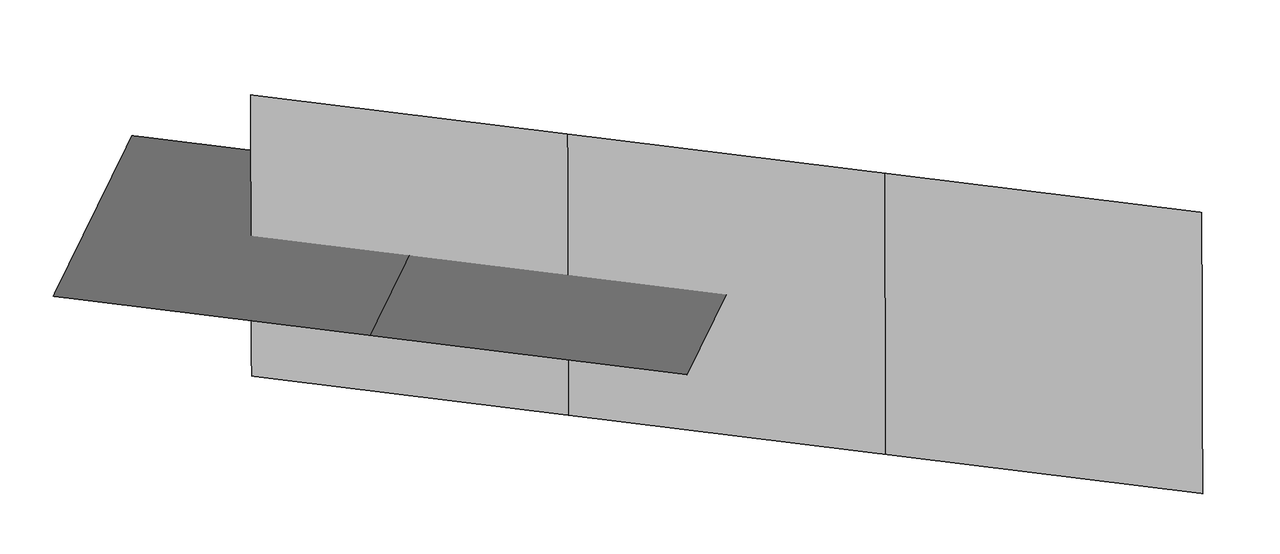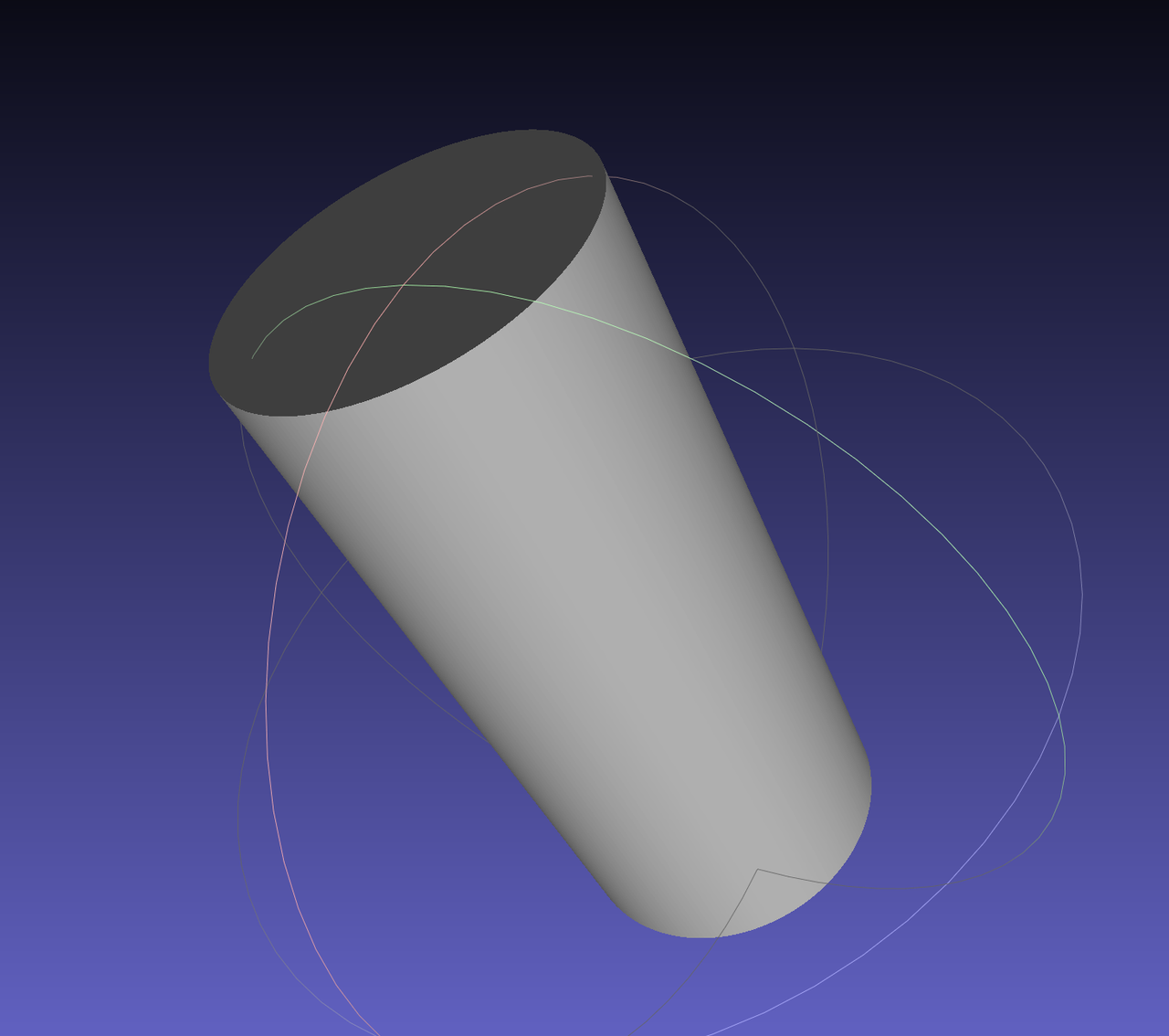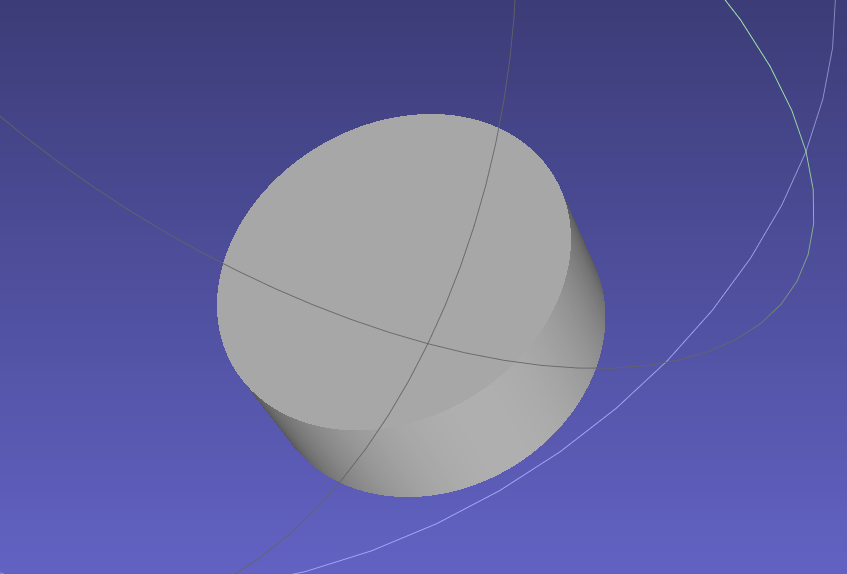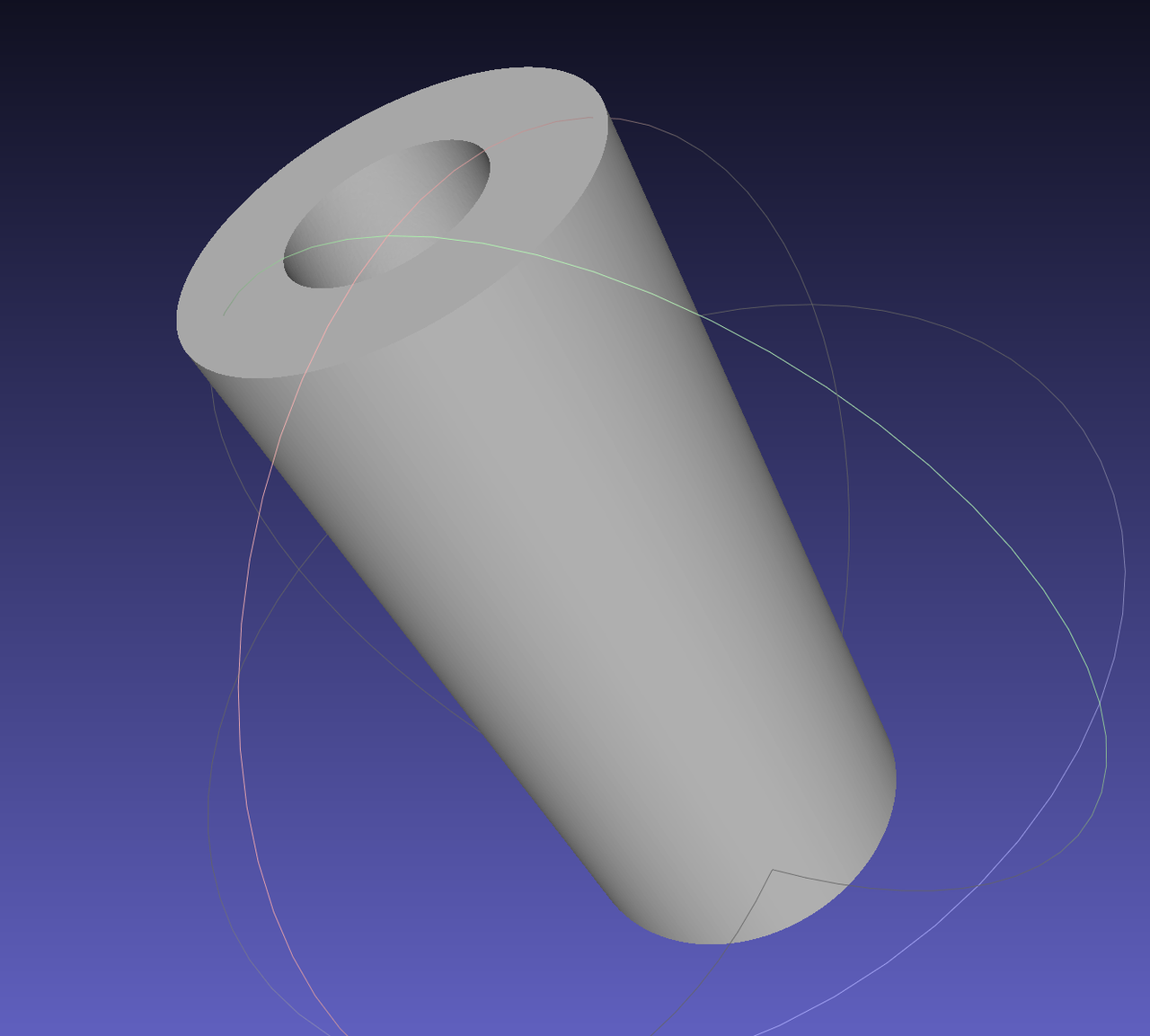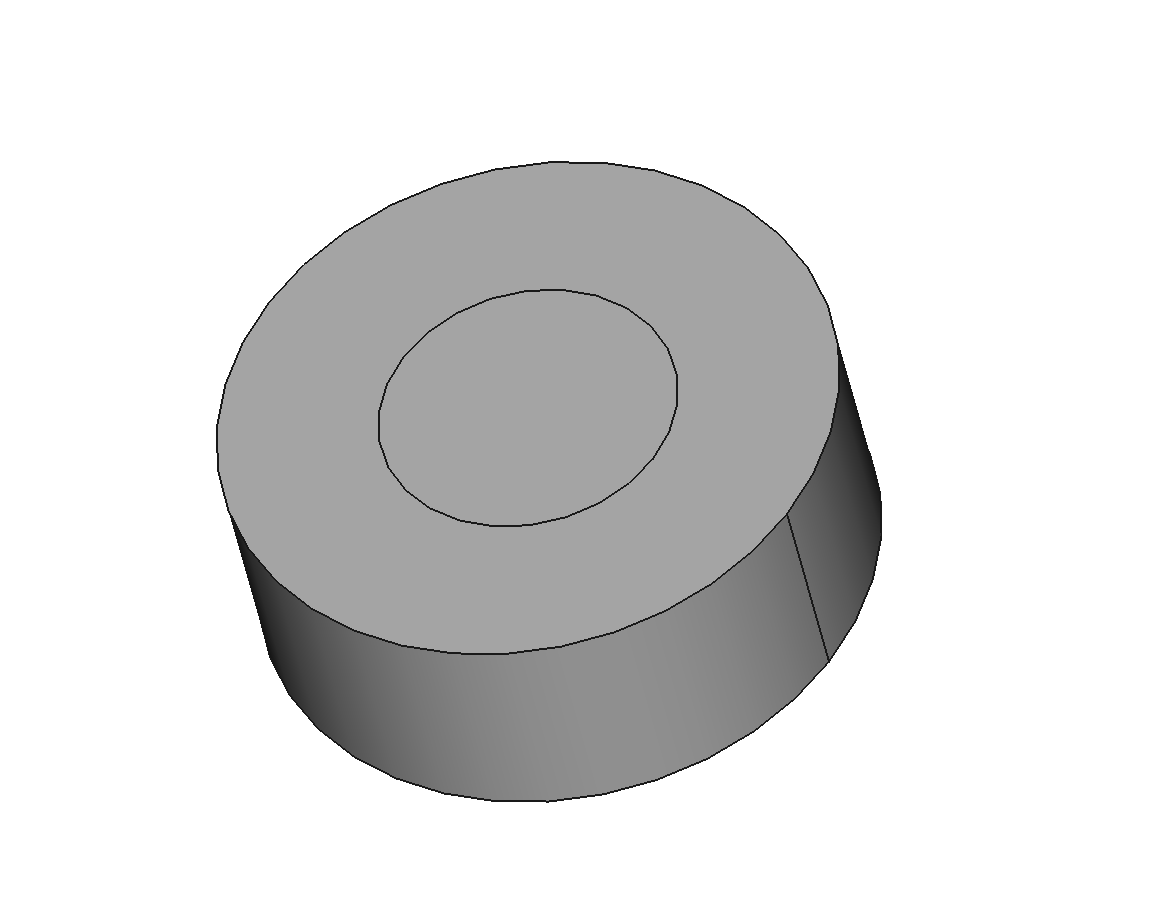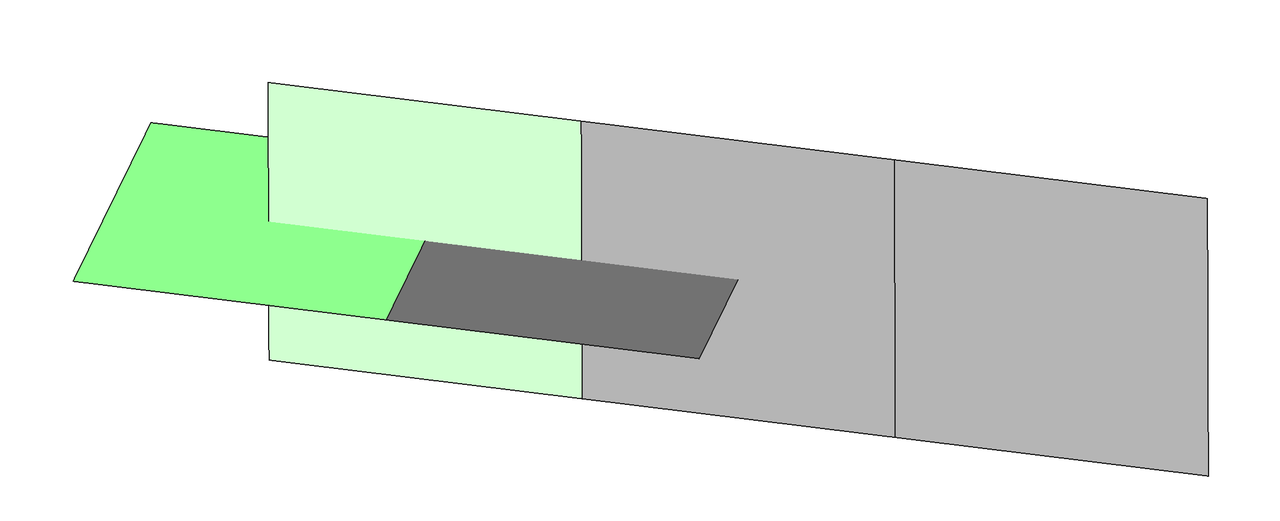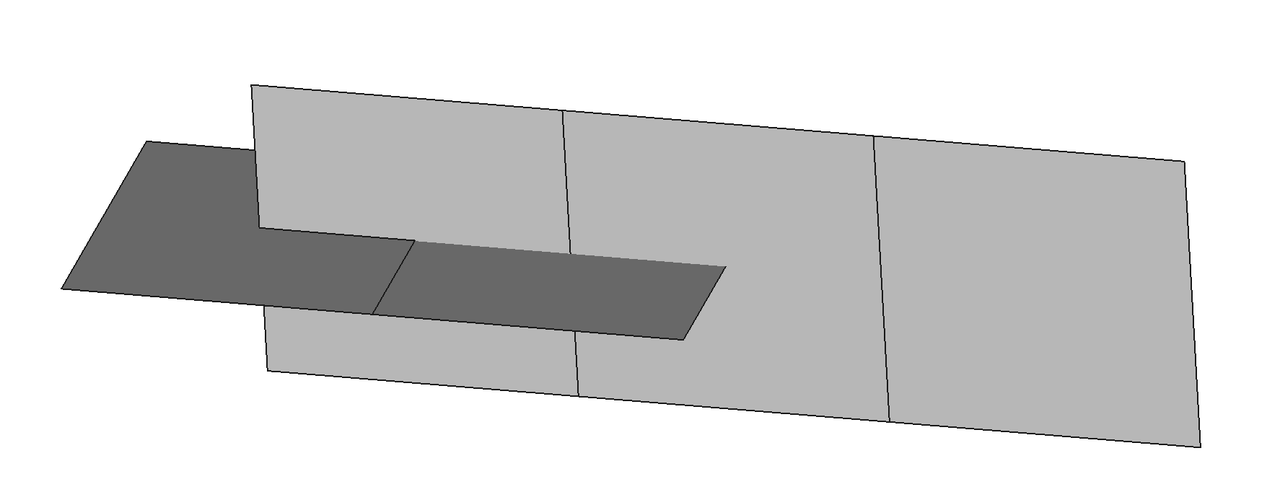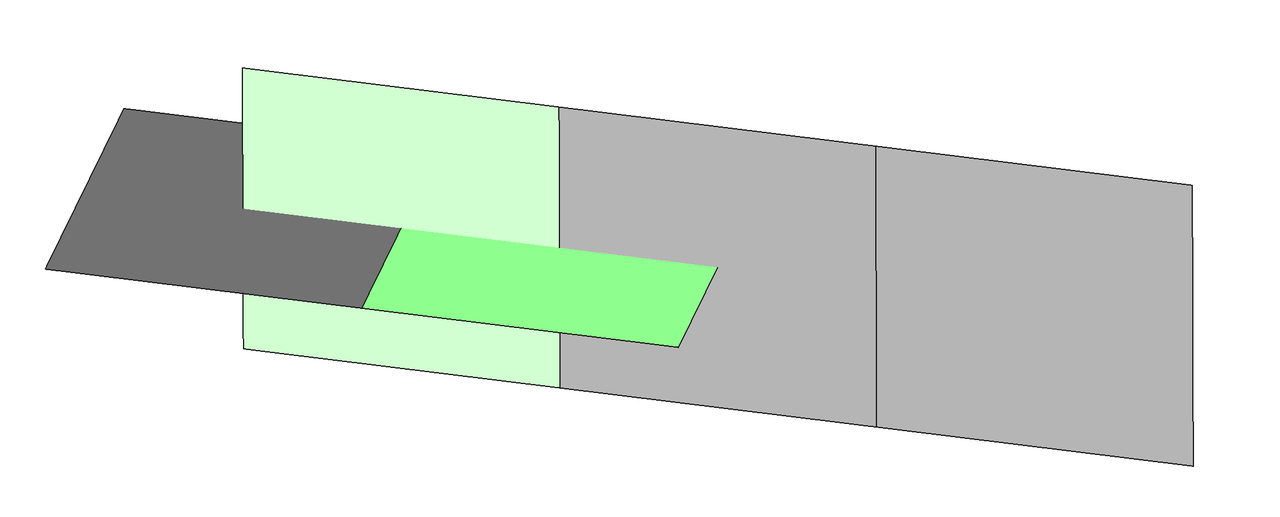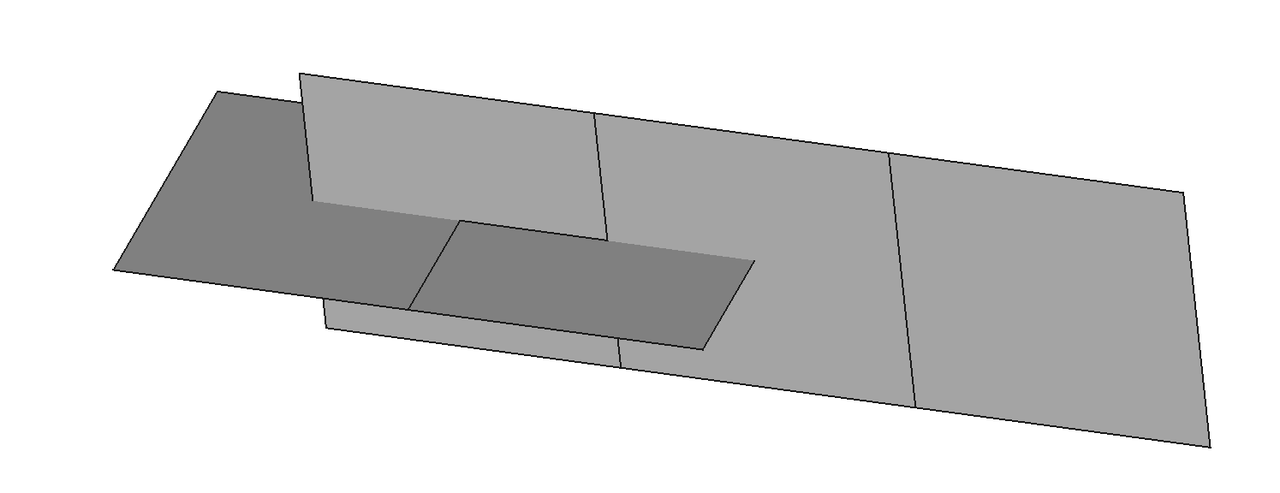概述
本教程提供了使用几何编辑的基本用法,导入 brep 格式文件,通过调用 GeomE 的 API 对模型进行几何编辑操作对模型进行修复。本教程中也会用到九韶内核 AMCAX 中的 API。另外,本教程图片中的红色边表示自由边,黄色边表示流形边。
命名空间
为了示例代码清晰,使用命名空间。
AMCAX GeomE 模块提供的所有接口所在的命名空间。
定义 misc.docu:21
AMCAX 内核提供的所有接口所在的命名空间。
定义 misc.docu:8
几何编辑示例一
CAD模型预览
导入brep格式cad模型,如下图所示:
准备工作
本教程示例首先会读入 brep 模型,接着对输入的模型进行几何编辑操作,最后将模型写入 brep 文件。
相关头文件
导入模型
导入cad文件,构建模型。
形状的基类,包含具有位置和方向信息的基础形状
定义 TopoShape.hpp:15
输出结果
写入 brep。
如图所示,画红圈的地方,一个面的短边和另一个面的长边之间有缝隙,两条边都属于自由边。
点插入到边上
编辑边的类
定义 EdgeEditor.hpp:19
AMCAX_API void TrimEdgeWithPoint(TopoShape &shape, const TopoEdge &edge, const std::vector< Point3 > &points)
将点投影到边上
索引集的模板类
定义 IndexSet.hpp:20
static AMCAX_API const TopoEdge & Edge(const TopoShape &s)
将形状转换为边
static AMCAX_API const TopoVertex & Vertex(const TopoShape &s)
将形状转换为顶点
PointT< double, 3 > Point3
三维点
定义 PointT.hpp:459
结果如图所示,相应的边上已经插入点,长边被裁减成两条边。
将一条边缝合到另一条边
edgeeditor.
SewEdges(shape, edge2, edge1, 0.1);
AMCAX_API void SewEdges(AMCAX::TopoShape &shape, const AMCAX::TopoEdge &edge1, AMCAX::TopoEdge &edge2, double tol)
缝合两条具有相近顶点的边,并将第二条边作为结果边
void clear() noexcept
清除索引集合
定义 IndexSet.hpp:90
结果如图所示,两个面之间的缝隙已经消除。
如图所示,画红圈的地方,一个面的边和另一个面有缝隙。
边投影到面
编辑面的类
定义 FaceEditor.hpp:25
AMCAX_API void EdgesProjectFace(TopoShape &shape, const IndexSet< TopoShape > &edges, TopoFace &face, TopoShape &replaceshape)
将边投影到面上
int insert(T &&key)
插入一个新键
定义 IndexSet.hpp:102
static AMCAX_API const TopoFace & Face(const TopoShape &s)
将形状转换为面
如图所示,指定的边已经投影到面的内部。
将一条边缝合到另一条边上
edgeeditor.
SewEdges(shape, edge2, edge1, 0.1);
如图所示,画红圈的地方,出现了很短的短边。
释放顶点
编辑顶点的类
定义 VertexEditor.hpp:19
AMCAX_API void ReleaseVertex(TopoShape &shape, const TopoVertex &vertex)
将指定顶点释放到各边上
如图所示,点被释放到各个面上。
删除点
将星形标记面的红色顶点删除。
AMCAX_API void RemoveVertex(TopoShape &shape, const TopoVertex &vertex)
在指定形状中删除边上的顶点
如图所示,星形标记面的红色顶点被删除,长边和短边连接成为一条边。
缝合顶点
如图所示,要将右边的面的顶点缝合到左边的面的顶点上。
AMCAX_API TopoVertex SewVertices(AMCAX::TopoShape &shape, const IndexSet< TopoShape > &vertexvec)
将一组顶点缝合为一个顶点
如图所示,两个顶点已经被缝合到一起。
将一条边缝合到另一条边上
edgeeditor.
SewEdges(shape, edge2, edge1, 0.1);
如图所示,将左边的面的边缝合到了右边的面的边上。
如图所示,选中两个顶点对该面进行参数切分。
参数切分
AMCAX_API void ParameterFaceCut(AMCAX::TopoShape &shape, const AMCAX::TopoFace &face, const AMCAX::TopoVertex &vertex1, const AMCAX::TopoVertex &vertex2)
根据指定的起始顶点和结束顶点对给定的面进行参数化切割
如图所示,参数切分成功。
重建边
如图所示,可以选择一条边(黄色)进行重建
AMCAX_API TopoEdge RebuildAndUpdateEdge(TopoShape &shape, const TopoEdge &edge)
对某条边的曲线进行重采样并更新边
下图为重建边前后对比。
在边上根据比例插入点
如图所示,在选中的边(黄色)上按比例 0.3 插入一个顶点。
AMCAX_API void TrimEdgeWithRatio(TopoShape &shape, const TopoEdge &edge, const std::vector< double > &ratios)
根据给定比例在边上插入顶点
如图所示,在选中边的 0.3 处插入了顶点。
释放边
如图所示,释放红圈圈起来的边。
AMCAX_API void ReleaseEdge(AMCAX::TopoShape &shape, const AMCAX::TopoEdge &edge)
将多个面之间的公共边释放回各自所属的面
如图所示,选中的边被释放到两个面上,成为自由边。
删除面
如图所示,要删除星形标记的面。
AMCAX_API void DeleteFace(AMCAX::TopoShape &shape, const AMCAX::TopoFace &face)
移除形状中的面
如图所示,选中的面已经删除。
连接两条边为一条边
如图所示,连接两条红色的边。
AMCAX_API TopoEdge JoinEdgesAndUpdate(AMCAX::TopoShape &shape, const IndexSet< TopoShape > &edges)
将多条边合并为一条边,并更新形状
如图所示,连接后两条边变为一条边,顶点消失。
反转面的定向
AMCAX_API void ReverseOrientation(AMCAX::TopoShape &shape, const AMCAX::TopoFace &face)
反转指定面的方向
点击这里example01可获得几何清理修复示例一完整源码,大家根据学习需要自行下载。
附录
下面列出了此示例的完整代码:
void GeomEdit()
{
edgeeditor.
SewEdges(shape, edge2, edge1, 0.1);
edgeeditor.
SewEdges(shape, edge2, edge1, 0.1);
edgeeditor.
SewEdges(shape, edge2, edge1, 0.1);
}
几何编辑示例二
CAD模型预览
导入step格式cad模型,如下图所示:
准备工作
本教程示例首先会读入step模型,接着对输入的模型进行几何编辑操作,最后将模型写入brep文件。
相关头文件
导入模型
导入cad文件,构建模型。
输出结果
写入brep。
检测边的类型
EdgeType
边的类型
定义 GeomEMacros.hpp:11
如图所示,选中绿色的边进行检测,返回该边的EdgeType是FreeEdge,表明该边是自由边。
检测边所属的自由边界
如图得到包含该边的自由边界。
选中自由边界进行补洞
faceeditor.
FillHole(shape, freeboundaries);
AMCAX_API void FillHole(TopoShape &shape, const IndexSet< TopoShape > &freeboundaries)
填补给定模型中孔的自由边界
如图所示,以该自由边界为边界的孔洞已填补完成。
选中边界建立新的Coons曲面
如图所示,选中绿色的边作为集合构建一个新的Coons曲面。
AMCAX_API TopoFace BuildCoons(TopoShape &shape, const IndexSet< TopoShape > &edges)
根据给定边集构造新的新的 coons 面
如图所示,Coons曲面构建成功。
选中边界建立新的平面
如图所示,选中绿色的边作为集合构建一个新的平面。
AMCAX_API TopoFace BuildPlane(TopoShape &shape, const IndexSet< TopoShape > &edges)
根据给定边集构造一个新的平面
如图所示,平面构建成功。
选中边界根据已有曲面建立新的面
如图所示,选中绿色的边作为集合根据黄色面的曲面建立新的面。
AMCAX_API TopoFace BuildFaceFromSurface(TopoShape &shape, const IndexSet< TopoShape > &edges, const TopoFace &face)
根据给定边集和已有面构造一个新的面
如图所示,新面构建成功。
点投影到面
AMCAX_API void VerticesProjectFace(TopoShape &shape, const IndexSet< TopoShape > &vertices, TopoFace &face, TopoShape &replaceshape)
将顶点投影到面上
创建顶点的类
定义 MakeVertex.hpp:16
如图所示,点成功投影到面上。
点击这里example02可获得几何清理修复示例二的完整源码,大家根据学习需要自行下载。
附录
void GeomEdit()
{
shape, "./data/skin.step");
}
几何编辑示例三
CAD 模型预览
导入 brep 格式 cad 模型,如下图所示,左图为初始模型1,右图为初始模型2。
准备工作
本教程示例首先会读入 brep 模型,接着对输入的模型进行几何编辑操作,最后将模型写入 brep 文件。
相关头文件
导入模型
导入 cad 文件,构建模型。
输出结果
写入 brep。
几何编辑示例
面的定向一致
导入的初始模型 1 由两个 solid 组成,其中第一个 solid 的各个面定向并不一致。
AMCAX_API void AlignFaceOrientations(TopoShape &shape)
确保形状中的所有面具有一致朝向(无非流形边),与形状中的第一个面的朝向一致
如下图所示,对第一个 solid 执行面的定向一致后,所有面的法向都朝外。
检测壳是否封闭
检测第一个 solid 的 shell 是否封闭,返回 true。
几何压印1
imprint1.
Imprint(shape, {solids[0], solids[1]}, {});
几何压印的类
定义 GeomImprint.hpp:22
AMCAX_API void Imprint(TopoShape &shape, const std::list< TopoShape > &targetlist, const std::list< TopoShape > &toollist={}, const ImprintOptions &options=ImprintOptions())
对多个形状执行相互压印,或将一组面压印到另一组面上
如下图所示,第二个 solid 被压印上一些拓扑结构。
几何压印2
如下图所示,选中绿色的面进行几何压印。
imprint2.
Imprint(shape, {faces[0]}, {faces[2]});
如下图所示,压印成功。
几何压印3
如下图所示,选中绿色的面进行几何压印。
imprint3.
Imprint(shape, {faces[1]}, {faces[2]});
如下图所示,压印成功。
点击这里example03可获得几何清理修复示例三完整源码,大家根据学习需要自行下载。
附录
void GeomEdit()
{
imprint1.
Imprint(shape, {solids[0], solids[1]}, {});
imprint2.
Imprint(shape, {faces[0]}, {faces[2]});
imprint3.
Imprint(shape, {faces[1]}, {faces[2]});
}



